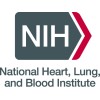
WENBIT - Western Norway B Vitamin Intervention Trial
Coronary Artery DiseaseMyocardial Infarction1 morePURPOSE OF STUDY Observational studies have demonstrated that elevated levels of plasma total homocysteine is a risk factor for cardiovascular disease. The purpose of this trial is to evaluate the clinical effects of homocysteine lowering treatment with B vitamins during 3-5 years follow-up of patients undergoing cardiac catheterization for suspected coronary artery disease (CAD). Special attention will be given to complication rates among patients needing subsequent percutaneous transluminal coronary angioplasty (PCI) or coronary artery by-pass grafting (CABG). HYPOTHESIS The primary hypothesis of this study is that, among patients with CAD, a daily supplement with B vitamins will reduce the risk for cardiovascular mortality and serious cardiovascular events with at least 20%. The secondary hypothesis of this study is that, among patients with CAD, a daily supplement with B vitamins will reduce the risk for total mortality, coronary events, cerebrovascular events and other cardiovascular events. The hypothesis will be tested for an effect of any of the treatments (folic acid / vitamin B12 or B6), and the effect will be evaluated according to initial total homocysteine levels and B vitamin levels as well as to the change in these levels after 1 and 6 months. The sample size has been calculated to 3088 patients using a two-sided chi-square test with significance 0.05 and at an 80% power level, presumed event rate of 22% over 4 years, and event rate reduction of 20%, adjusted for non-compliance/drop-out of 20%. STUDY DESIGN This is a controlled, double-blind two-centre trial with 3090 included men and women who underwent coronary angiography at Haukeland University Hospital or Stavanger University Hospital between April 1999 and April 2004. At baseline about 1300 patients underwent PCI and 600 underwent CABG. The patients were randomized into 4 groups in a 2 x 2 factorial design to receive one of the following four treatments: A, folic acid 0.8 mg plus vitamin B12 0.4 mg and vitamin B6 40 mg per day; B, folic acid 0.8 mg plus vitamin B12 0.4 mg per day; C, vitamin B6 40 mg per day; D, placebo. The active drug and the placebo tablets had identical appearance and taste. Treatment was started as soon as the patients were randomized after the coronary angiography procedure. The patients have been undergoing interviews, clinical examination and blood-sampling at baseline, at follow-up after 1 month and 1 year, and at a final study visit. In addition, information on dietary habits was obtained from 2400 patients at baseline. Among 350 patients that have undergone PCI at baseline, a full clinical examination, blood sampling and repeat coronary angiography to assess re-stenosis has been performed about 9 (6-12) months after the PCI procedure. For these patients, angiograms suitable for quantitative coronary angiography (QCA) analysis have been obtained at the baseline and follow-up invasive procedures. The follow-up was terminated ahead of schedule in October 2005 due to lack of compliance of the participants caused by media reports from the NORVIT study (NCT00266487) on potential increased cancer risk associated by B vitamin supplementation. The patients had then been followed for 1.5 - 5 years. STUDY END POINTS Primary clinical endpoints during follow-up are all cause death, non-fatal acute myocardial infarction, acute hospitalization for unstable angina and non-fatal thromboembolic stroke (infarction). Secondary endpoints are fatal and non-fatal acute myocardial infarction (including procedure related myocardial infarction), acute hospitalization for angina, stable angina with angiographic verified progression, myocardial revascularization, fatal and non-fatal thromboembolic stroke.

Heart Disease on the Mend
Coronary Heart DiseaseStroke2 moreThe primary objective of this study was to evaluate the effectiveness of a multifactor cardiovascular disease (CVD) risk reduction program using team case management in high risk patients who have low family incomes and limited access to medical care. Patients were randomized to case management (99) or usual care (49) with baseline, 6-month and 12-month evaluations of CVD risk factors, clinical status and quality of life.

Phase 3 Imaging and Safety Study of AI-700 in Patients With Suspected Coronary Artery Disease Undergoing...
Coronary Artery DiseaseThis study was designed to evaluate the ability of AI-700-enhanced rest-stress echocardiography to detect coronary artery disease (CAD) in patients with suspected ischemic heart disease who are indicated for single-photon emission computed tomography (SPECT) imaging.

Improving Coronary Prevention in a County Health System
Cardiovascular DiseasesCoronary Disease2 moreTo examine whether the Stanford Health Education and Risk Reduction Training (HEAR2T) program , a case management approach, can be effectively used to manage the risk of coronary artery disease.

Cardiac Arrhythmia Suppression Trial (CAST)
Cardiovascular DiseasesCoronary Disease8 moreTo determine whether drug treatment of asymptomatic ventricular arrhythmias in post-myocardial infarction patients reduced the incidence of sudden cardiac death and total mortality.

Antihypertensive and Lipid-Lowering Treatment to Prevent Heart Attack Trial (ALLHAT)
Cardiovascular DiseasesCoronary Disease7 moreTo determine if the combined incidence of nonfatal myocardial infarction and coronary heart disease death differs between diuretic-based and each of three alternative antihypertensive pharmacological treatments. Also, to determine, in a subset of this population, if lowering serum cholesterol with a HMG CoA reductase inhibitor in older adults reduces all-cause mortality compared to a control group receiving usual care. Conducted in conjunction with the Department of Veterans' Affairs.

Women's Health Initiative (WHI)
Bone DiseasesBreast Neoplasms7 moreTo address cardiovascular disease, cancer, and osteoporosis, the most common causes of death, disability, and impaired quality of life in postmenopausal women. The three major components of the WHI are: a randomized controlled clinical trial of hormone replacement therapy (HRT), dietary modification (DM), and calcium/vitamin D supplementation (CaD); an observational study (OS); and a community prevention study (CPS). On October 1, 1997, administration of the WHI was transferred to the NHLBI where it is conducted as a consortium effort led by the NHLBI in cooperation with the National Institute of Arthritis and Musculoskeletal and Skin Diseases (NIAMS), the National Cancer Institute (NCI), and the National Institute on Aging (NIA).

Azithromycin and Coronary Events Study (ACES)
Coronary DiseaseHeart Diseases2 moreTo determine whether treatment with azithromycin decreases the rate of coronary heart disease events among patients with stable documented coronary artery disease.

Stanford Coronary Risk Intervention Project (SCRIP)
Cardiovascular DiseasesCoronary Arteriosclerosis3 moreTo determine whether modification of risk factors altered the rate of progression of coronary artery disease in arteries with mild atherosclerosis and no mechanical intervention in patients who had coronary bypass surgery or percutaneous transluminal coronary angioplasty (PTCA).

Disease Characteristics of IR-CAD: a Case-control Study
Coronary Artery DiseaseCoronary Artery Stenosis5 moreThe present case-control study is designed to investigate the disease characteristics of IR-CAD by comparing the demographics, clinical features, lab results, imaging findings, and prior treatment between 20 patients with IR-CAD and 10 patients with AS-CAD.
